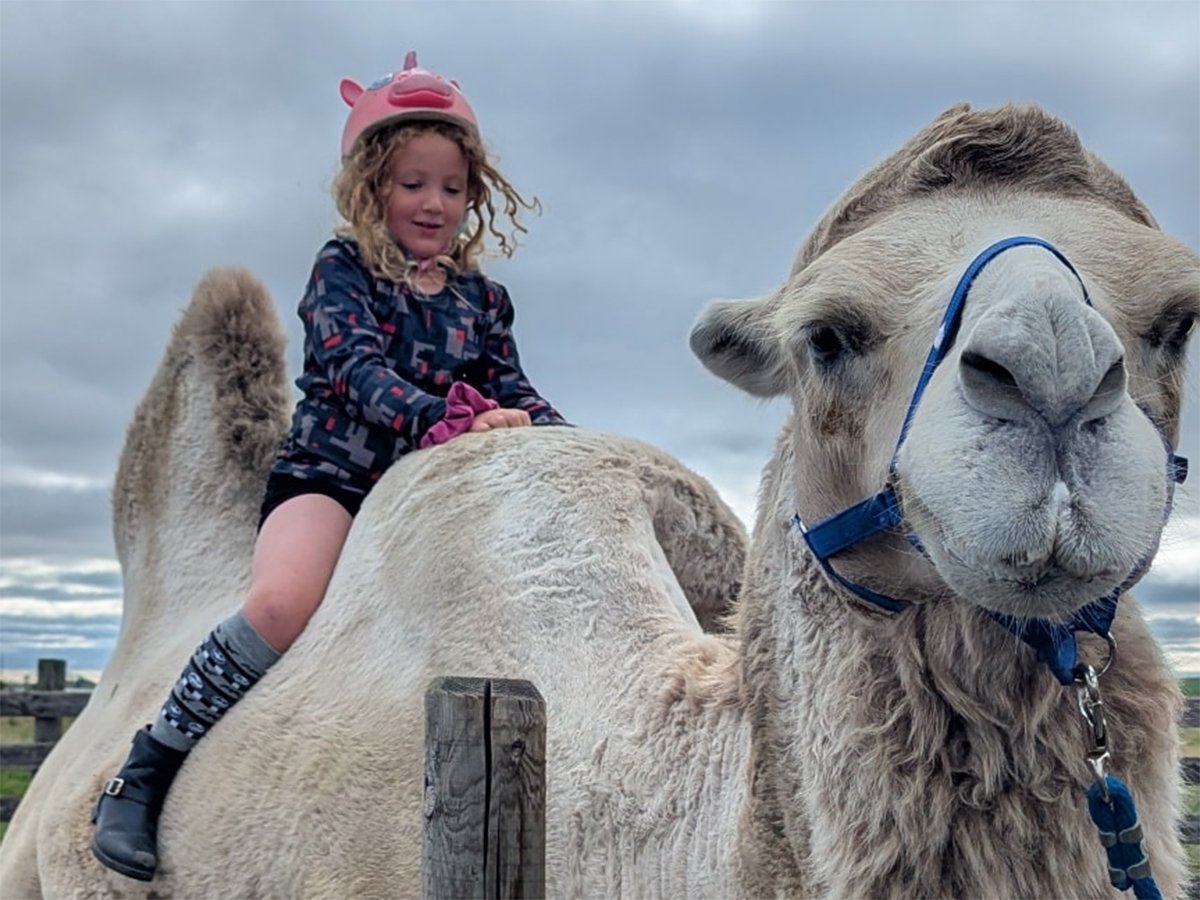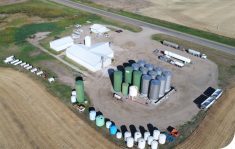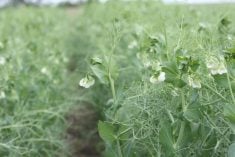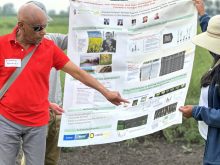If you are an enumerator for the United States National Agricultural Statistics Services in Oklahoma, chances are you’re fairly tall.
After all, corn can grow as high as an elephant’s eye, and as an enumerator, you have to count all the kernels in those towering ears.
Field enumerators have to be prepared to do all sorts of things, from climbing ladders to getting down in the dirt.
“Our objective yield program is predicated on actually going out and counting stalks and plant populations and seeing how many ears are developing, or pods on a soybean plant, bolls on cotton, wheat heads,” said Dave Aune, chief of NASS’s statistical methods branch.
Read Also

Volunteers help exotic animal farm rebuild
Exotic animal farm loses beloved camel and pony to huge hail storm that gripped the Brooks, Alta. area as a community member starts a fundraiser to help the family recover from the financial and emotional damage.
“We have some programs like cherry objective yield where you have to climb a ladder to count cherry buds,” he said. “So you send them out in pairs. If you fall off the ladder in an orchard by yourself, they might not find you for days.”
Enumerators are part of a sophisticated process designed to give the U.S. Department of Agriculture arguably the most detailed accounting of national agricultural production in the world, Aune said.
While on-farm visits are the most visible component, most of the information gathering is done by telephone interviews and mail surveys with farmers, and satellite remote sensing.
The on-the-ground information is collected through co-operative agreements between NASS and state statistical organizations that hire the survey and enumerating staff.
Each June, NASS conducts a major survey, in which enumerators visit farmers to get a firsthand accounting of their agricultural activities.
Facts and figures
This midyear survey collects data on crop acreage, grain stocks, number of farms, size of farms, livestock inventories, pigs farrowed, calves born, the farm economy, labor and other items for state, regional and national estimates.
About 52,000 farms are visited. Another 70,000-75,000 are phoned or mailed a survey.
The data is collected and held in confidence. Employees who disclose information before the release of a report face fines of up to $100,000 (U.S.) or 10 years in prison.
Smaller surveys are conducted through the year. Each state’s information goes to its statistical organization, which pores over the raw data.
They will also look to see if results within one region are similar. Any numbers that fall much outside the norms are reviewed for accuracy.
Statistical rules and historical trends are also applied to see if any “sore thumbs” stick out, he said.
Interestingly, the yield data provided by the farmer always starts out pessimistic compared to the eventual harvest yield, while that collected by field evaluators is initially overly optimistic, Aune said.
With all the data counted and analyzed, each state produces a report stating things like area seeded to various crops, estimated yield and production. The reports are reviewed by NASS and state agricultural and statistical experts and, by consensus, the board comes up with national numbers.
The process is done regularly. There are 12 crop production reports a year, 12 cattle-on-feed reports and quarterly hogs and pigs reports.
Over time, the data paints a picture of the increasing productivity of American agriculture.
“You find year and year on corn, the plant stands are thicker and thicker,” said Aune. “The genetics are trending up.”
















